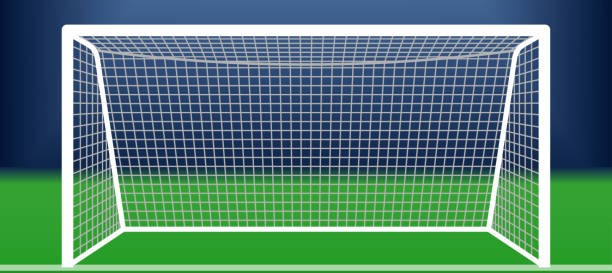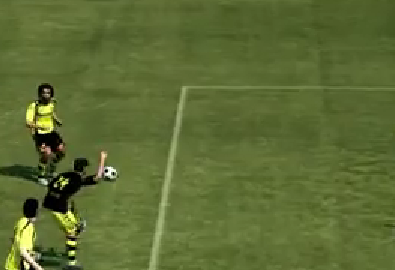













HANDBALL.

In football, a handball refers to a player (except the goalkeeper within their own penalty area) deliberately touching
the ball with their hand or arm during play. Handball is considered a violation of the Laws of the Game and typically results
in a free kick or penalty kick for the opposing team, depending on where the infraction occurs. The rules around handball
have evolved over time, and the modern interpretation includes several key elements.
Definition of Handball: A handball occurs when a player:
- ▫ Deliberately touches the ball with their hand or arm, making contact with the ball outside of natural body positioning.
- ▫ Gains an advantage from the contact, such as controlling the ball or preventing a goal-scoring opportunity.
The intent behind the handball is crucial in determining whether the offense should be penalized. Referees assess whether
the contact was intentional or accidental.
Deliberate Handball:
- ▫ This occurs when a player intentionally moves their hand or arm toward the ball to block, deflect, or control it.
- ▫ Examples include reaching out to stop a pass, extending arms unnaturally to block a shot, or deliberately handling the ball
to gain control.
- ▫ A deliberate handball always results in a free kick (or penalty if inside the penalty area).
Accidental Handball:
- ▫ If the ball accidentally touches a player’s hand or arm without any deliberate movement toward the ball, it is usually not penalized.
- ▫ However, accidental handballs by an attacking player leading to an immediate goal or goal-scoring chance can still result in a foul,
even if unintentional.
Hand and Arm Positioning:
- ▫ The position of the arms relative to the body is crucial when determining handball. If a player's arm or hand is in an unnatural
position (e.g., raised or extended away from the body) and it makes contact with the ball, it is more likely to be considered a foul.
- ▫ If a player’s arms are in a natural position (e.g., close to their body or used for balance), and the ball strikes their hand or arm,
it is less likely to be penalized.
Proximity and Reaction Time:
- ▫ If a player has little or no time to react to the ball striking their hand or arm (e.g., a close-range shot), referees may decide
that the handball was unintentional and refrain from penalizing it.
- ▫ The faster the ball is moving and the shorter the reaction time, the more likely a handball is deemed accidental.
Handball by Goalkeepers:
- ▫ Goalkeepers are allowed to use their hands **within their penalty area. However, outside this area, goalkeepers are subject to
the same handball rules as any other player. If they handle the ball outside the penalty box, it results in a free kick for the opposing
team.
Consequences of a Handball
Free Kick:
- ▫ If a handball occurs outside the penalty area, the opposing team is awarded a direct free kick from the spot where the handball
took place.
- ▫ A direct free kick allows the attacking team to shoot directly at goal from the kick.
Penalty Kick:
- ▫ If a handball is committed by a defender inside their own penalty area, a penalty kick is awarded to the opposing team.
- ▫ This is one of the most severe consequences of a handball since it gives the attacking team a high chance of scoring.
Exceptions and Special Cases:
Unintentional Handball Leading to a Goal (Attacking Player):
- ▫ If an attacking player accidentally handles the ball and immediately scores or creates a goal-scoring chance, it is still considered
a foul. Even if the handball was unintentional, referees are instructed to penalize it.
- ▫ This rule is designed to ensure fairness, as no goal can be scored following any kind of handball, accidental or deliberate.
Deflections and Ricochets:
- ▫ If the ball deflects off a player's body or another player and hits their hand or arm unintentionally, it is usually not considered
a handball. The player's reaction time is a key factor in these situations.
Handball in Set Plays and Corners:
- ▫ Handballs are often contested in crowded areas during set plays like corners and free kicks. Defenders must be cautious to avoid
handling the ball in situations where their arms might be raised for balance or protection.
- ▫ Referees will penalize any deliberate attempts to block shots or passes with the hands during these set pieces.
Role of VAR (Video Assistant Referee):
- ▫ In modern football, the Video Assistant Referee (VAR) is used to review potential handball decisions, especially for incidents
inside the penalty area. If a clear and obvious error is made by the referee in regard to a handball, VAR may intervene to either confirm
or overturn the original decision.
Examples of Handball Scenarios
Deliberate Handball Example:
- ▫ A defender raises their arm to block a cross or shot in the penalty area. This results in a penalty kick for the attacking team,
as the action was deliberate and denied a goal-scoring opportunity.
Accidental Handball Example:
- ▫ A midfielder accidentally touches the ball with their hand when attempting to control a pass, but the ball deflects off their
thigh onto their arm. If this doesn’t lead to a goal-scoring opportunity, it is unlikely to be penalized.
Controversial Handball Example:
- ▫ An attacking player scores a goal, but upon review by VAR, it is found that the ball brushed their arm in the build-up. Even
if it was unintentional, the goal may be disallowed under the current rules.
Recent Rule Changes and Interpretations: In recent years, football governing bodies (such as IFAB, the International
Football Association Board) have clarified and refined handball rules to reduce controversy. Some key points include:
- ▫ Accidental handball by an attacking player immediately before scoring a goal or creating a goal-scoring chance is now penalized.
- ▫ Greater emphasis is placed on arm positioning and whether the arm is in a "natural" or "unnatural" position relative to the
player's movement.
Summary of Handball Rules in Football:
- ▫ A deliberate handball is when a player intentionally uses their hand or arm to interfere with the ball.
- ▫ Accidental handball is typically not penalized unless it results in a goal or goal-scoring opportunity for the attacking team.
- ▫ The positioning of the hand or arm is a critical factor in determining whether a handball is intentional or accidental.
- ▫ Handball offenses result in a free kick outside the penalty area or a penalty kick if inside the penalty area.
Understanding the nuances of handball helps players avoid committing fouls and allows fans to better follow and appreciate the
referee’s decisions.




























